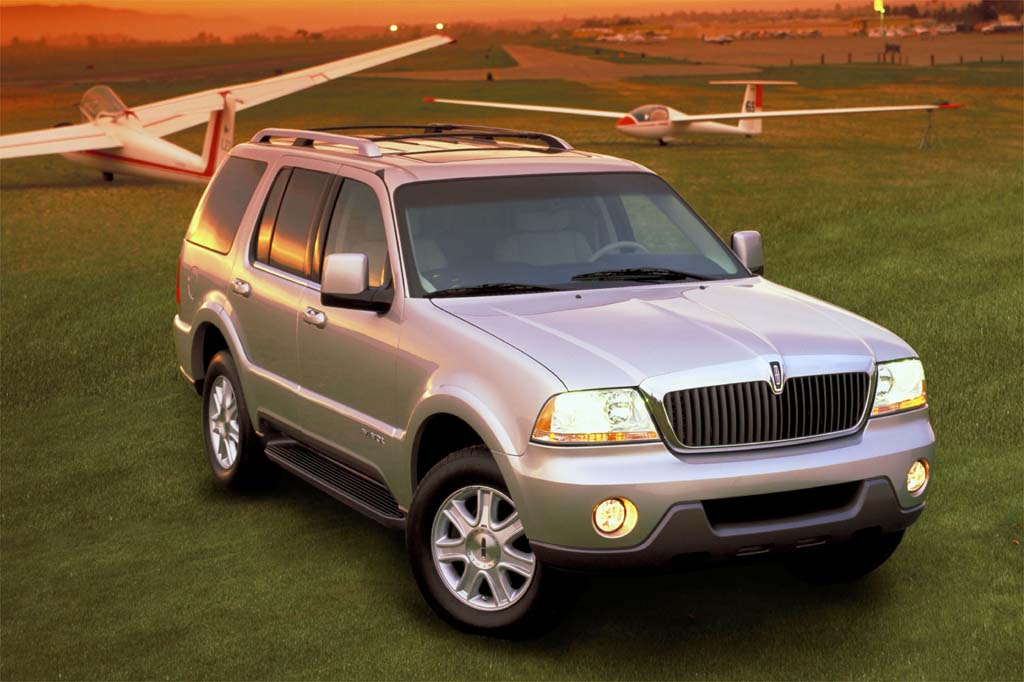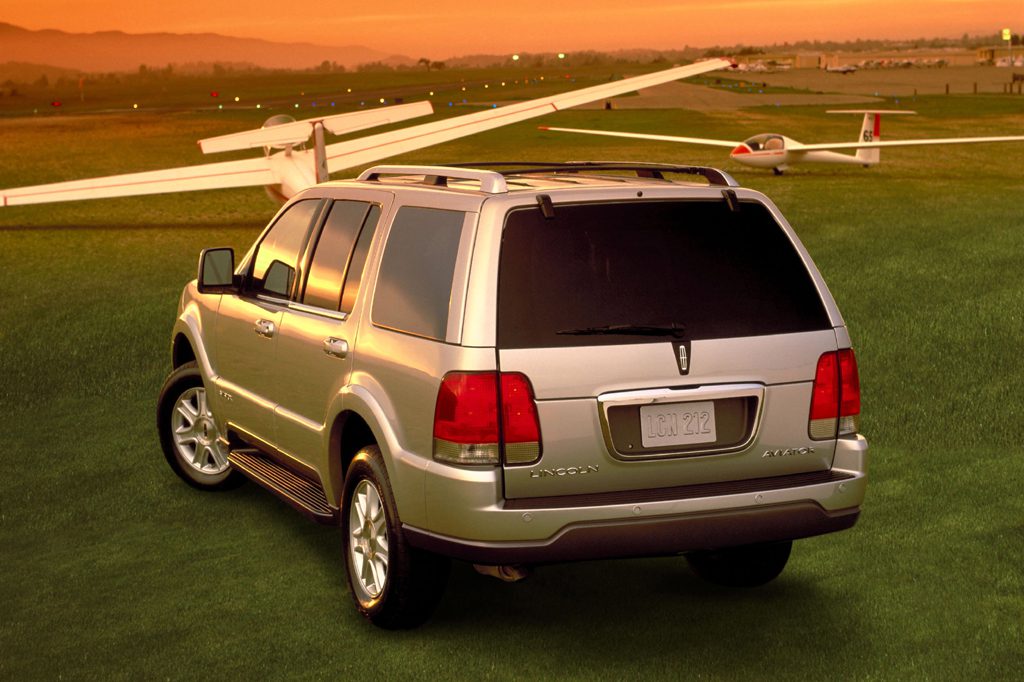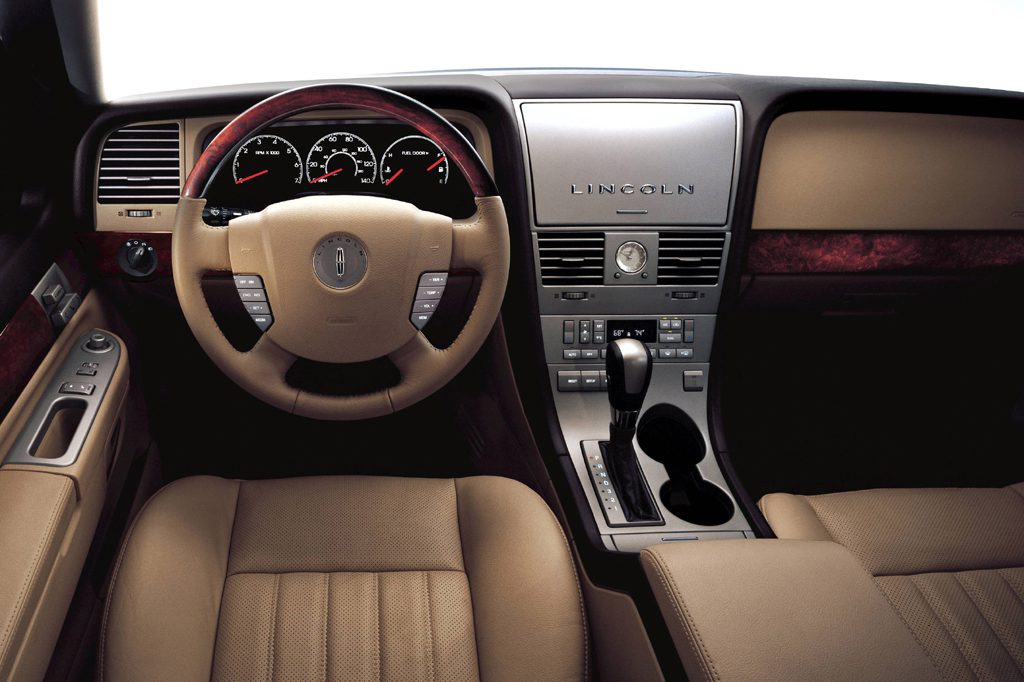| Premium midsize SUV; Built in Canada |
|
|
| Good condition price range: $5,400 – $9,800* |

2003 Lincoln Aviator

2004 Lincoln Aviator

2005 Lincoln Aviator

Lincoln Aviator interior
| Pros: |
|
| Cons: |
|
Aviator is more than competent, has V8 muscle, and offers an array of features at a relatively reasonable new-vehicle price. Still, BMW and Lexus rivals top this Lincoln for quality of interior materials, overall refinement, and prestige. Because resale values are somewhat low, some tempting used-vehicle prices might be found.
Overview
Lincoln entered the midsize luxury sport-utility vehicle class for 2003 with what amounts to a gilded version of the Ford Explorer and Mercury Mountaineer. Aviator had its own front and rear appearance, however, as well as interior styling, and came only with the V8 that was optional in Ford and Mercury versions. Here, the V8 was tuned for 302 horsepower, versus 240 hp.
Inside and out, the Aviator mimicked the look of Lincoln’s full-size Navigator SUV. Other than engine tuning and cabin decor, though, the Aviator offered few features that weren’t also available on Explorer or Mountaineer. Aviator’s standard 17-inch wheels and wood interior trim were unavailable on its Ford and Mercury cousins. Neither was Aviator’s Navigator-style optional second-row bucket seats, with a center console.
Seating seven, the Aviator came with a five-speed automatic transmission and rear-wheel drive, or all-wheel drive without low-range gearing. Later in the year came an optional traction-control/antiskid system for AWD models.
Standard curtain side airbags (optional on Explorer/Mountaineer) served the first and second seating rows, and were designed to deploy in a side collision and in a rollover. A fold-flat third-row bench seat, power-adjustable pedals, rear-obstacle detection, and dual-zone climate system with rear controls also were standard.
Luxury and uplevel Premium models were offered, the latter including high-intensity headlamps, heated/cooled power front seats, an in-dash CD changer, and special machine-finish wheels. Options included a sunroof and navigation system, and rear DVD entertainment systems. Competitors included the Acura MDX, Cadillac SRX, Lexus RX 300/330, and Mercedes-Benz M-Class.
Yearly Updates
| 2004 Aviator A tire-pressure monitor became standard on 2004 Aviators. Later in the model year, the optional traction-control/antiskid system became available with Roll Stability Control, which was designed to detect an impending tip and activate the antiskid system, to reduce the chance of a rollover. Two models were offered: Luxury and Ultimate. A folding third-row bench seat was standard, and a three-passenger second-row bench was available for up to seven-passenger capacity. |
| 2005 Aviator Roll Stability Control became standard for 2005, but little else changed on the slow-selling Aviator. |
